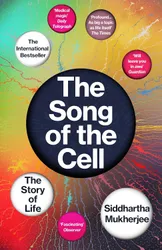Cells are found in all forms of life; in bacteria, archaea, plants, fungi and animals. In fact, this book makes the case that we define the existence of life by the existence of cells.
Having made this case, however, the book then proceeds to ignore many other forms of life, and focuses on mammalian, and particularly human, cells. There is relatively little about plant cells, or how the first cells might have evolved. Rather than telling the entire story of the cell from the very beginning of life, the author focuses on the areas he has worked on in his career and knows the most about: human cells, and diseases like cancer. Happily, I think this focus, and the personal reflections and anecdotes (we meet several of Mukherjee’s patients throughout the book) works really well.
The book starts by telling the story of how humans came to understand that all life is made up of cells. This starts with early microscopists, like Antonie van Leeuwenhoek, who were the first to see the microsopic single-celled life that is found all around us. One particular hero of the author’s is Rudolf Virchow, who formulated important ideas about how cells are involved in disease, and described and named several forms of cancer. Looking at his wikipedia page though, he was also wrong about a lot of things. He rejected both the germ theory of disease and the idea of Darwinian evolution!
One of the areas this book covers in detail is the immune system. There is a lot of detail in here about the different types of cells and how they work together to combat diseases in our bodies. Even after the crash course in immunology that we all received due to the Covid-19 pandemic, I still learned a huge amount from these sections and enjoyed them immensely. The story of our immune responses is told vividly but clearly and I really liked the detail the author conveyed in this part of the book.
One theme that runs throughout the book is around cell therapies. The book makes the case that many interventions that we may not regard as such, like blood transfusions, are a form of cell therapy. Cells from another body, in this case blood cells, are given to a diseased patient in order to help them recover. One interesting story from this book is how the first blood transfusions were performed, and how the concept of blood groups was discovered, as well as the innovations that allow this procedure to be so successful and widely used today.
Of course, when we think about cell therapy today, we tend to think of things like stem cells and genetic engineering. The book covers several cases in which diseases have been successfuly treated through various forms of cell therapy. Mukherjee also considers the future of such therapies and the ethical and societal implications. Although he does highlight the possible negative consequences of having widely available stem cells and genetic engineering, ultimately he seems to come down on the side of these things being a net good for humanity.
There is a good section of colour photographs in the centre of this book (mostly showing the scientists involved in the discoveries), and a few useful diagrams throughout the rest of the book. Some of these are rough sketches, and are reproduced quite small, so they aren’t always easy to read or understand. So I’m giving this a passing grade for diagrams, but only just!
What I particularly liked about this book was the author’s willingness to go deep into a topic, such as the sections on the immune system. If you are expecting a more general overview of how cells work, both in single-celled organisms, plants, animals and fungi, then this book may disappoint. But I really enjoyed the mix of detailed scientific knowledge, personal anecdote and reflection that this book provides.
